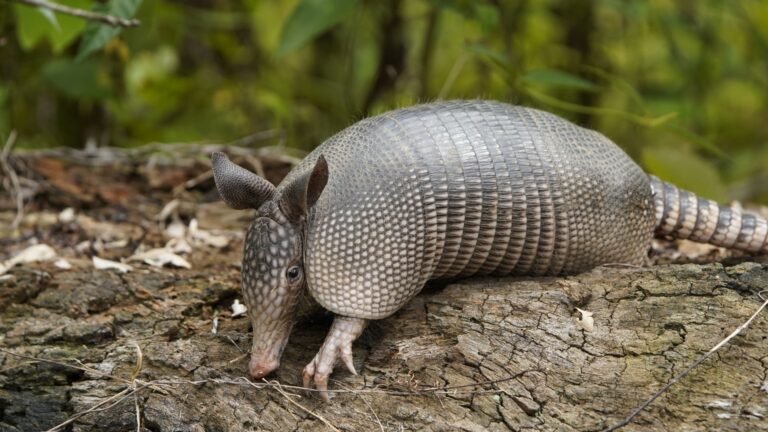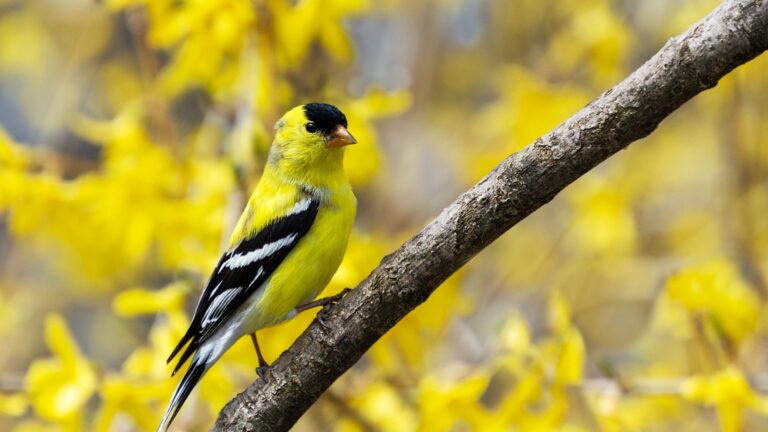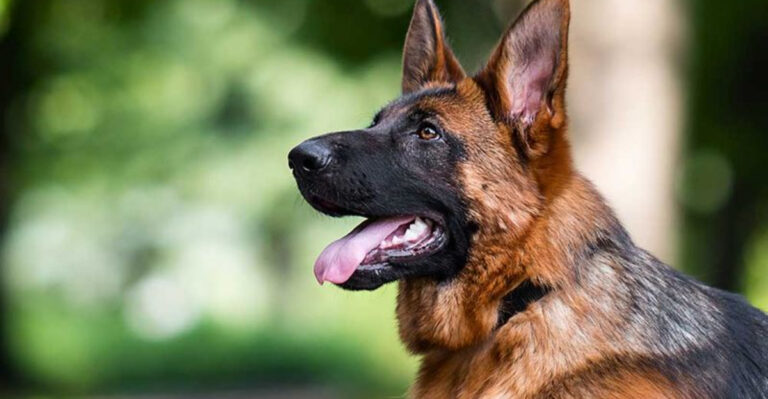15 Fierce Predators Of The Rocky Mountains You Shouldn’t Cross

The Rocky Mountains harbor some of North America’s most formidable hunters. These majestic peaks and dense forests provide perfect hunting grounds for predators that have adapted to the harsh mountain environment.
From silent stalkers to pack hunters, these animals command respect from even the most experienced hikers and outdoorsmen.
Let’s explore the fierce predators that rule these rugged mountains and why giving them plenty of space is always the wisest choice.
1. Grizzly Bears: The Mountain Monarchs
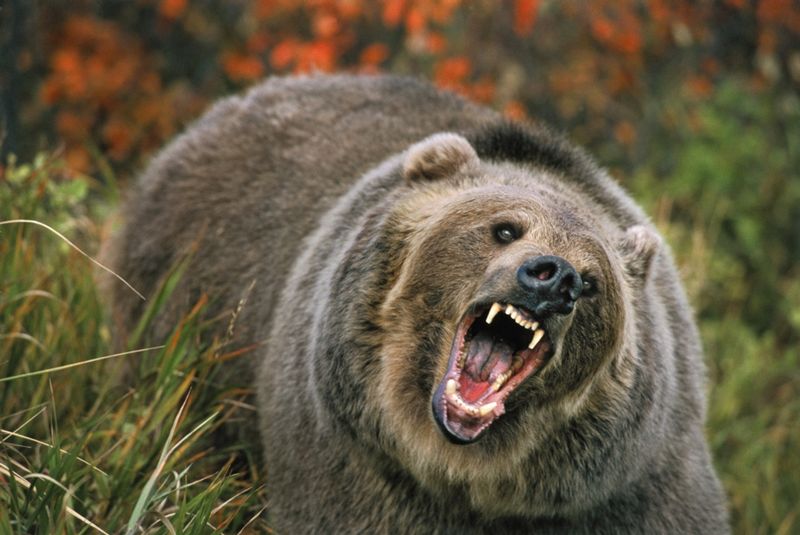
Standing nearly 8 feet tall on hind legs with massive 4-inch claws, grizzlies reign supreme in the Rockies. These 800-pound giants can smell food from miles away and sprint at 35 mph despite their bulky appearance.
Mother bears with cubs deserve extra caution – they’re responsible for most human attacks in the region. Their incredible strength allows them to flip 700-pound rocks effortlessly while searching for insects and small mammals.
Unlike black bears, grizzlies rarely retreat when startled. They’ll defend food sources and territory with intimidating displays – huffing, jaw-popping, and ground-slapping before charging if they feel threatened.
2. Mountain Lions: Silent Stalkers

Rarely seen but always watching, mountain lions are the phantom predators of the Rockies. These tawny cats can leap 40 feet horizontally and 15 feet vertically, with powerful jaws designed to deliver a killing neck bite to deer and elk.
Unlike pack hunters, these solitary ambush predators prefer surprise attacks from elevated positions. Their specialized paw pads allow silent movement through any terrain – from snow-covered slopes to rocky outcroppings.
A mountain lion territory spans up to 300 square miles, marked with scrapes and scat. Females with cubs become particularly defensive, so backing away slowly while maintaining eye contact is your best strategy if you encounter one.
3. Gray Wolves: The Pack Hunters

Reintroduced to Yellowstone in 1995, gray wolves have reclaimed their role as apex predators throughout the Rockies. Working in coordinated packs of 4-12, these intelligent hunters can bring down prey ten times their size through teamwork and endurance.
Wolf packs maintain territories spanning up to 1,000 square miles, communicating through haunting howls that carry for miles across mountain valleys. Their jaws exert 1,500 pounds of pressure – enough to crack moose femurs.
While wolf attacks on humans remain extremely rare, they’re reshaping the entire mountain ecosystem. Their presence forces elk to move more frequently, allowing overgrazed vegetation to recover and bringing balance to the food web.
4. Black Bears: Underestimated Omnivores
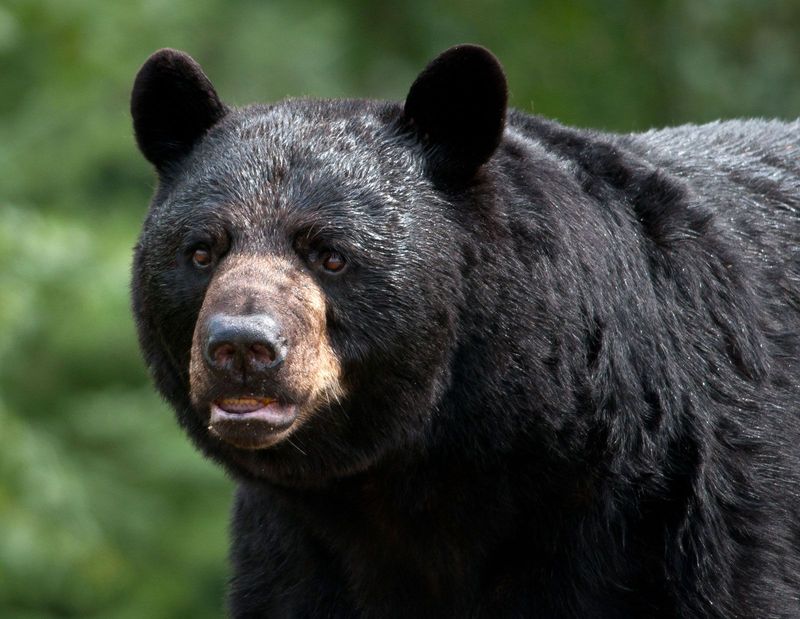
Don’t let their name fool you – black bears in the Rockies come in cinnamon, blonde, and even white colors. Though smaller than grizzlies, these 300-pound omnivores can still be dangerous when startled or protecting cubs.
Equipped with remarkable climbing abilities, black bears can scamper up trees at surprising speeds. Their diet shifts seasonally – spring brings tender plants and carrion, summer offers berries and insects, while fall triggers a feeding frenzy called hyperphagia.
During this pre-hibernation period, black bears consume up to 20,000 calories daily, sometimes feeding for 20 hours straight. Their exceptional memory helps them return to productive food sources year after year.
5. Golden Eagles: Aerial Assassins
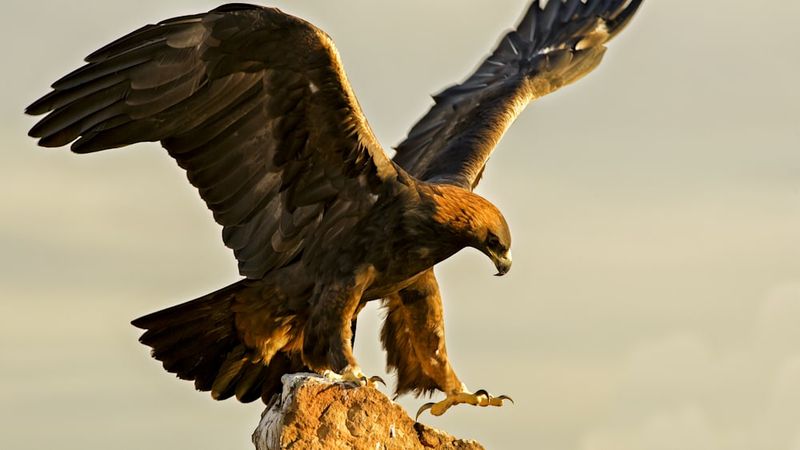
With wingspans reaching 7 feet and diving speeds of 150 mph, golden eagles are the undisputed aerial predators of the Rockies. Their razor-sharp talons exert 400 pounds of pressure per square inch – stronger than a wolf’s bite.
These massive raptors can lift prey weighing up to 15 pounds, including mountain goat kids and foxes. Mated pairs hunt cooperatively, with one bird flushing prey toward its waiting partner.
Golden eagles build massive stick nests on cliff ledges, sometimes 10 feet across and weighing over a ton. Their exceptional vision allows them to spot rabbit-sized prey from nearly 2 miles away, making them nearly impossible to hide from in open mountain terrain.
6. Wolverines: Pound-for-Pound Champions
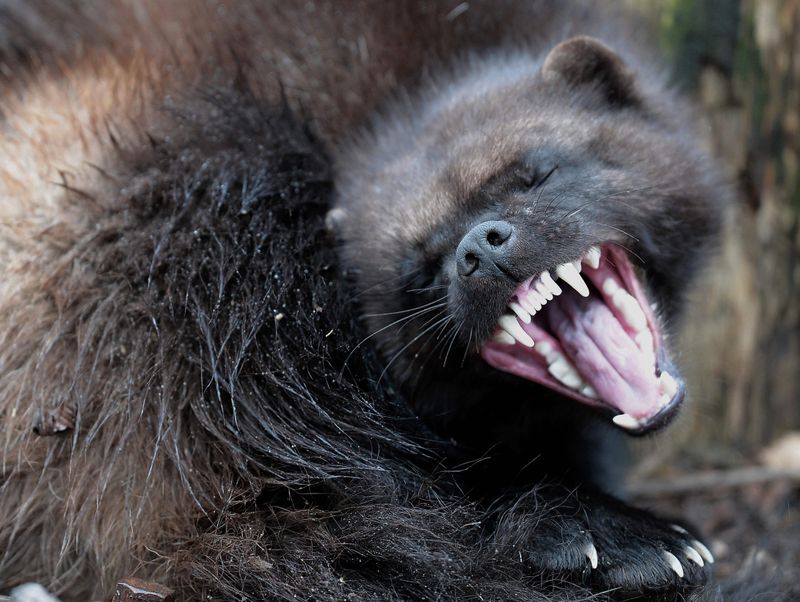
Resembling small bears but actually related to weasels, wolverines are the toughest pound-for-pound fighters in the Rockies. Despite weighing just 30 pounds, these ferocious mammals have been documented driving grizzlies away from kills.
Their oversized paws act like natural snowshoes, allowing them to travel 15 miles daily through deep snow in search of food. Wolverines possess specialized molars that can crush frozen meat and bone – they’ll consume everything, including teeth and hooves.
A single wolverine might patrol a territory of 500 square miles, marking boundaries with powerful musk. Their thick fur resists frost, making them perfectly adapted for the harshest mountain conditions where few other predators can survive.
7. Canada Lynx: Snowshoe Specialists
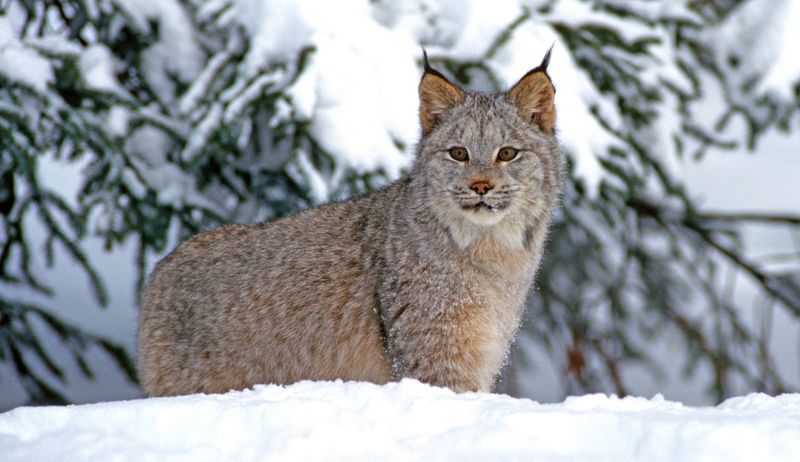
With massive paws that serve as natural snowshoes, the Canada lynx thrives in the snowiest regions of the Rockies. These medium-sized cats have specialized for hunting snowshoe hares, which comprise up to 90% of their diet in winter.
Lynx possess exceptional hearing – their distinctive tufted ears can detect a mouse moving under a foot of snow. Their thick silver-gray fur provides perfect camouflage against winter landscapes, allowing them to remain virtually invisible to prey and hikers alike.
Unlike many predators, lynx populations boom and crash in direct response to snowshoe hare numbers in a famous 10-year cycle. When hares become scarce, these adaptable cats switch to hunting squirrels, grouse, and even young deer.
8. Bobcats: Adaptable Ambushers
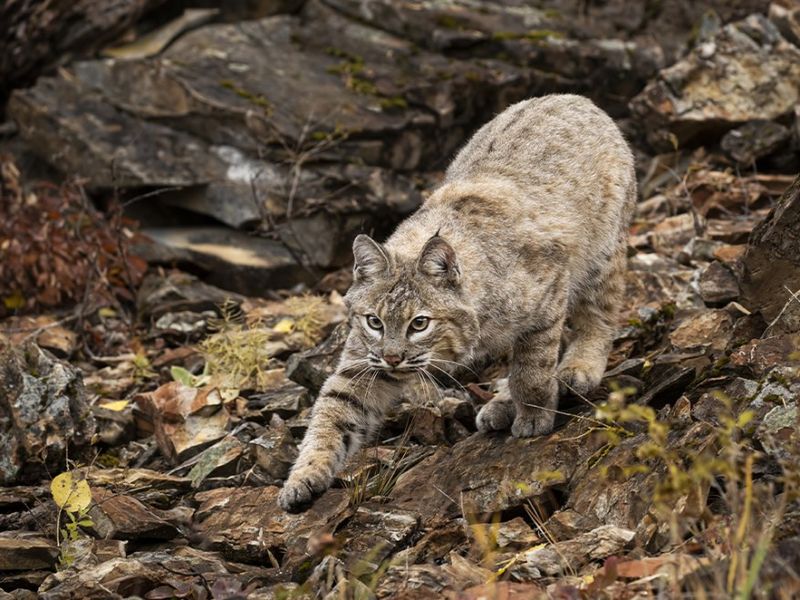
Smaller but more widespread than lynx, bobcats are the stealthy mid-sized predators of the Rocky Mountain foothills. These 30-pound cats thrive in diverse habitats from desert scrub to mountain forests, hunting everything from rabbits to deer.
Masters of the ambush, bobcats can remain motionless for hours before pouncing with explosive speed. Their spotted coats blend perfectly with dappled forest light, making them nearly impossible to spot until they move.
Bobcats possess remarkable jumping ability – they can leap 12 feet horizontally to catch birds in mid-flight. Though rarely seen by humans, their distinctive tracks and scrape marks on trees reveal their presence throughout the Rockies’ lower elevations.
9. American Badgers: Underground Terrors
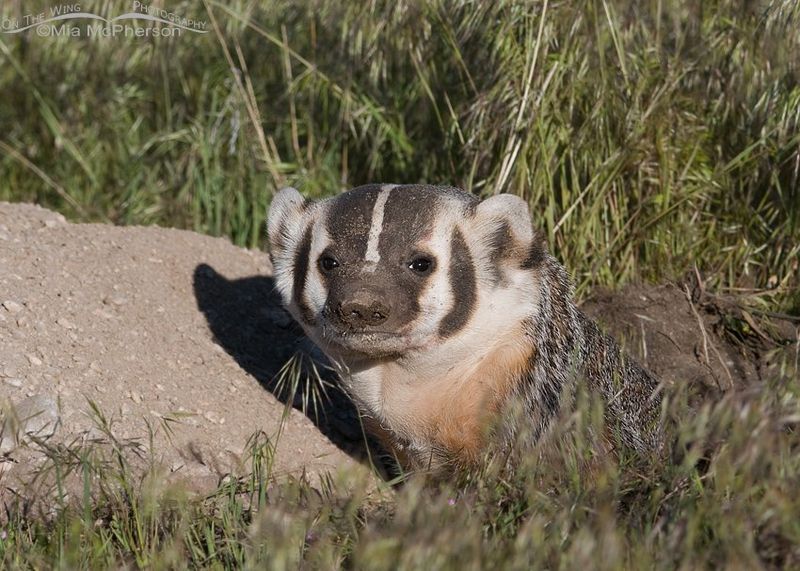
Don’t be fooled by their small size – badgers are among the most aggressive predators in the Rocky Mountain grasslands. These 25-pound diggers can tunnel through soil faster than a human can shovel it, using powerful front claws as both digging tools and weapons.
Badgers hunt by excavating burrows of ground squirrels and prairie dogs with shocking speed. Their low, muscular build and loose skin allow them to twist inside tight tunnels while making them difficult for larger predators to grab effectively.
When cornered, badgers stand their ground against animals many times their size, including bears and wolves. Their distinctive black and white facial markings serve as warning coloration – a clear signal to leave these short-tempered predators alone.
10. River Otters: Playful But Lethal
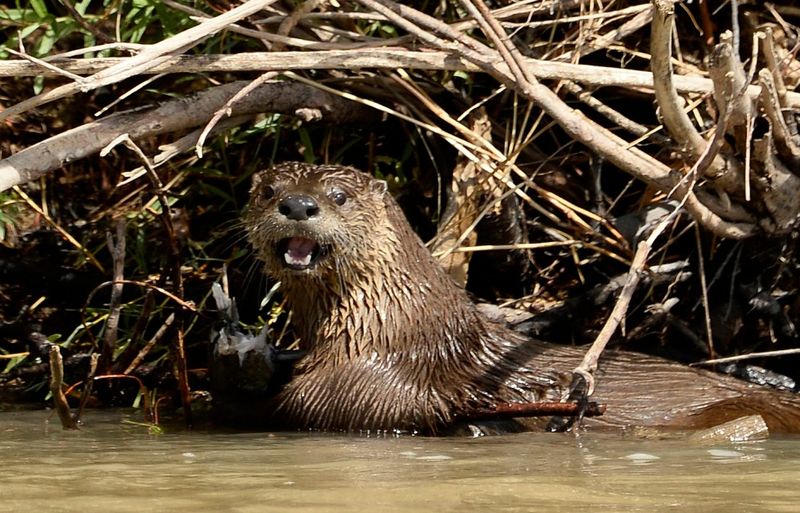
Behind their seemingly cute appearance, river otters are highly efficient aquatic predators throughout Rocky Mountain waterways. These streamlined mammals can swim at 8 mph and stay submerged for up to 4 minutes while hunting fish, crayfish, and even small mammals.
Their dense fur – containing up to a million hairs per square inch – keeps them insulated in frigid mountain streams. Otters possess remarkable dexterity, using their sensitive whiskers and paws to detect prey hidden under rocks and in underwater crevices.
During winter, otters create slides on snowy banks, appearing playful while actually conserving energy between hunting sessions. Their social nature and apparent playfulness mask their true nature as voracious predators that can significantly impact local fish populations.
11. Great Horned Owls: Night Hunters

With a silent wingspan of up to 5 feet, great horned owls rule the Rocky Mountain night skies. Their specialized feathers eliminate flight noise completely, allowing them to swoop down on prey without the slightest warning sound.
These powerful birds can take down animals twice their weight, including skunks, raccoons, and even other raptors. Their massive yellow eyes contain so many light-gathering cells that they can see clearly in near-total darkness – about 100 times better than humans.
Great horned owls possess ear tufts that aren’t actually ears – their real ears are asymmetrically positioned on their skull, allowing them to triangulate prey sounds with remarkable precision. A single owl family can consume over 1,000 rodents during a breeding season.
12. Coyotes: Adaptable Opportunists
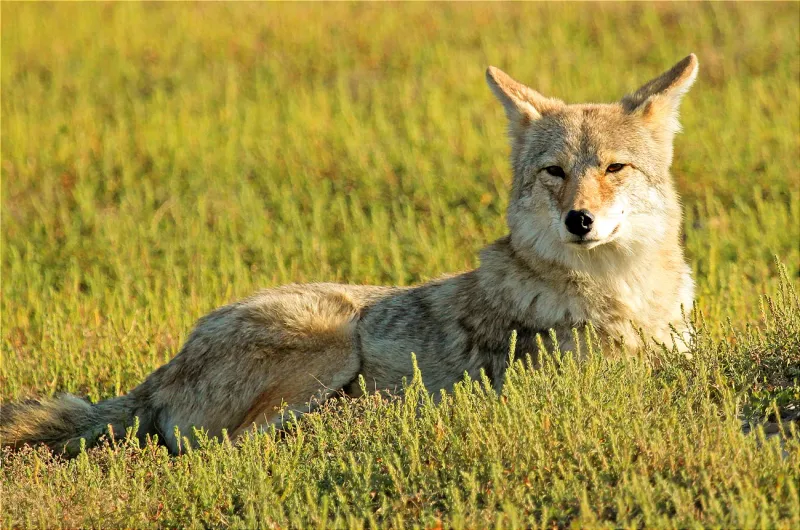
Often heard but rarely seen, coyotes have expanded their range throughout the Rockies despite intensive hunting pressure. These highly intelligent canids can shift their social structure from solitary hunters to coordinated packs depending on available prey and competition.
Coyotes possess remarkable vocal abilities, using a complex language of yips, barks, and howls to communicate territory boundaries and coordinate hunts. A single family can produce over a dozen distinct sounds with specific meanings.
Unlike wolves, coyotes thrive alongside human development, actually increasing their reproduction rates when persecuted. Their adaptable diet includes everything from mice and rabbits to fruit, garbage, and occasionally pets – making them both admired and vilified throughout mountain communities.
13. Peregrine Falcons: Speed Demons

Hunting from Rocky Mountain cliffs, peregrine falcons are the fastest animals on Earth, reaching 240 mph during hunting dives called stoops. These aerial specialists target mainly birds, striking with such force that they often kill prey instantly through impact alone.
Peregrines possess specialized nostrils with bony tubercles that prevent their lungs from rupturing during high-speed dives. Their exceptional vision allows them to spot small birds from over a mile away while maintaining focus during dives that would blur human sight.
Once endangered due to DDT poisoning, peregrines have made a remarkable recovery in the Rockies. They’ve even adapted to hunting at night near cities, using artificial lighting to target bats and migrating birds that fly after dark.
14. American Marten: Tree-Top Terrors

Looking like a cross between a fox and a weasel, American martens are specialized predators of the Rocky Mountain conifer forests. These cat-sized members of the weasel family move with incredible agility through the forest canopy, hunting squirrels, birds, and small mammals.
Martens possess semi-retractable claws and flexible ankle joints that allow them to descend trees headfirst and even hang upside-down while hunting. Their oversized paws serve as natural snowshoes, supporting their weight on deep powder snow.
Despite their small size, martens maintain vast territories of up to 15 square miles, marked with distinctive musky scent. They remain active throughout brutal mountain winters when temperatures drop to -40°F, hunting beneath the snow and in tree cavities.
15. Northern Goshawks: Forest Phantoms

With short, powerful wings designed for maneuvering through dense trees, goshawks are the fighter jets of Rocky Mountain forests. These crow-sized raptors fly at breakneck speeds through timber stands, executing sharp turns to capture squirrels, grouse, and rabbits.
Goshawks possess remarkable red eyes and distinctive white eyebrow stripes that give them an eternally fierce expression. Their hearing is so acute they can pinpoint prey movements through dense foliage, striking with deadly accuracy.
During nesting season, goshawks become notoriously aggressive, diving at anything approaching their territory – including humans. Forest hikers have reported being struck repeatedly by diving adults protecting nests, making these medium-sized hawks among the most intimidating birds in the mountains.

